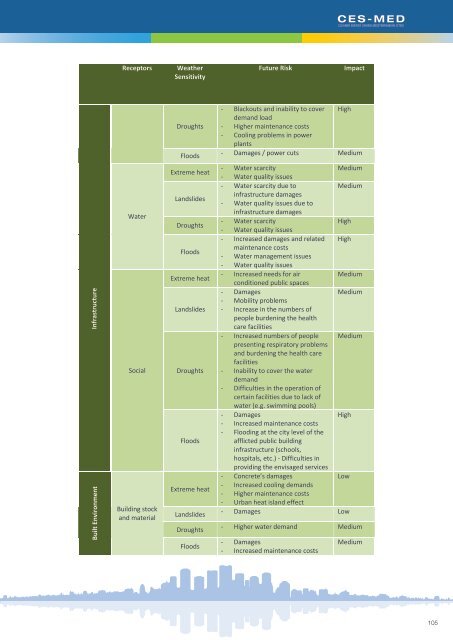161117_Jordan_ASEZA_SECAP_Revised
Create successful ePaper yourself
Turn your PDF publications into a flip-book with our unique Google optimized e-Paper software.
in place, thus supporting action by developing countries and the most vulnerable countries,<br />
in line with their own national objectives.<br />
<strong>Jordan</strong> signed on the 22 nd of April, 2016, the Paris Agreement, which was entered into force<br />
in the country on December 4 th of the same year. The Intended Nationally Determined<br />
Contributions (INDCs), as set by each country, have been laid by <strong>Jordan</strong> at 1.5% reduction of<br />
the GHG emissions by 2030 compared to the BAU scenario. This target is to be achieved<br />
unconditionally, namely is the country’s national target without external support. Also, <strong>Jordan</strong><br />
has set a conditional on international support target of 14% by 2030 compared to the BAU<br />
scenario.<br />
<strong>Jordan</strong> has started developing national plans and signing conventions about environmental,<br />
energy and climate strategies since 1991. Lately <strong>Jordan</strong> committed to the international<br />
environmental convention UNFCC and initiated with its support a National Economic and<br />
Environmental Development Study (NEEDS) for Climate Change which aims at identifying<br />
financing needs to implement adaptation and mitigation measures. In addition linkages with<br />
financial and regulatory instruments are identified to support the implementation of<br />
adaptation and mitigation measures. The study is based on three axes: Selection of key sectors<br />
for climate change mitigation and adaptation measures, Assessment of the financing needs in<br />
parallel with finding financial instruments, Raising awareness and facilitating informed<br />
consensus among government agencies on the policy actions required to mobilize finance and<br />
investment in mitigation and adaptation measures. [18]<br />
With its Third National Communication Report of 2014 to UNFCCC, <strong>Jordan</strong> has set a series of<br />
mitigation and adaptation actions. The mitigation actions adopted in the previous chapter are<br />
in line with the national policy, focusing on the promotion of RES and SWH, adoption of green<br />
building codes, energy efficiency and awareness raising across all activity sectors, promotion<br />
of recycling, public transport, electric vehicles etc. The national strategy adaptation actions<br />
focus on drinking water resources and their protection, on health related activities, such as<br />
protection of the public from heat waves and water-, air- and vector borne diseases, on<br />
ecosystems and biodiversity protection, as well as food security and socioeconomic<br />
adaptation. The suggested adaptation actions for ASEZ Authority are in line with the national<br />
priorities.<br />
4.3 Climate data and Clima projections<br />
Current situation<br />
<strong>Jordan</strong>’s climate is characterised by the variation from a Mediterranean-like climate in the<br />
west to a desert-like climate in the east and south, but the land is generally arid. The southern<br />
stretch of the Wadi Araba is the hottest and driest part of the geographical zone. The map in<br />
Figure 27 below clearly shows that the hottest parts of the country are those closest to<br />
the coastal regions of the Dead Sea and along the Wadi Araba. The mean annual<br />
average temperature at the Test and Demonstration Center site is 25 °C, with variations in<br />
summer up to 44 °C and in winter down to 4 °C. The average winter humidity is about 65%,<br />
and in summer it is typically below 40% and can drop to as low as 15%. Regarding<br />
precipitation, <strong>Jordan</strong> experiences very low amounts (Figure 28) with average annual<br />
rainfall to be below 50mm.<br />
94

















